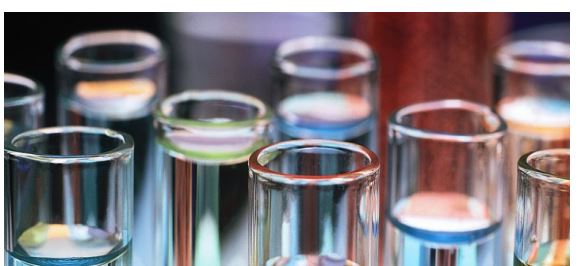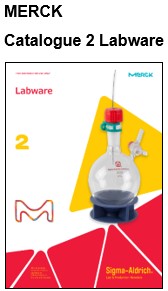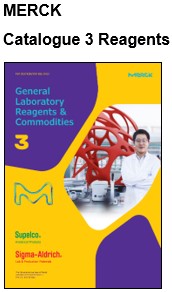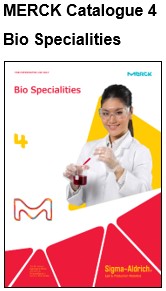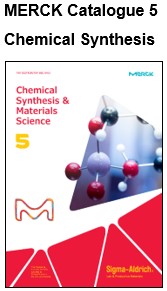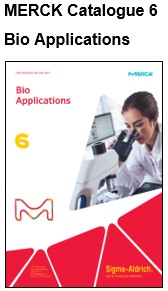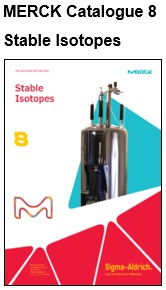Courtesy of Labmanager.com
We list some of the most common lab safety rules out there, to help you whether you’re developing or updating a set of policies for your own lab
Having a strong set of overall laboratory safety rules is essential to avoiding disasters in the lab. Lab Manager recently scoured the safety policies of several laboratories to determine some of the most common lab safety rules out there, to help you whether you’re developing or updating a set of policies for your own lab. Of course, safety rules are only effective when they are enforced, which is why strong lab management is so important to a safe laboratory as well. Knowing the proper laboratory safety signs and symbols is also important.
Here are the safety rules that most commonly came up in our look at several laboratories’ policies:
General lab safety rules
The following are rules that relate to almost every laboratory and should be included in most safety policies. They cover what you should know in the event of an emergency, proper signage, safety equipment, safely using laboratory equipment, and basic common-sense rules.
- Be sure to read all fire alarm and safety signs and follow the instructions in the event of an accident or emergency.
- Ensure you are fully aware of your facility's/building's evacuation procedures.
- Make sure you know where your lab's safety equipment—including first aid kit(s), fire extinguishers, eye wash stations, and safety showers—is located and how to properly use it.
- Know emergency phone numbers to use to call for help in case of an emergency.
- Lab areas containing carcinogens, radioisotopes, biohazards, and lasers should be properly marked with the appropriate warning signs.
- Open flames should never be used in the laboratory unless you have permission from a qualified supervisor.
- Make sure you are aware of where your lab's exits and fire alarms are located.
- An area of 36" diameter must be kept clear at all times around all fire sprinkler heads.
- If there is a fire drill, be sure to turn off all electrical equipment and close all containers.
- Always work in properly-ventilated areas.
- Do not chew gum, drink, or eat while working in the lab.
- Laboratory glassware should never be utilized as food or beverage containers.
- Each time you use glassware, be sure to check it for chips and cracks. Notify your lab supervisor of any damaged glassware so it can be properly disposed of.
- Never use lab equipment that you are not approved or trained by your supervisor to operate.
- If an instrument or piece of equipment fails during use, or isn't operating properly, report the issue to a technician right away. Never try to repair an equipment problem on your own.
- If you are the last person to leave the lab, make sure to lock all the doors and turn off all ignition sources.
- Do not work alone in the lab.
- Never leave an ongoing experiment unattended.
- Never lift any glassware, solutions, or other types of apparatus above eye level.
- Never smell or taste chemicals.
- Do not pipette by mouth.
- Make sure you always follow the proper procedures for disposing lab waste.
- Report all injuries, accidents, and broken equipment or glass right away, even if the incident seems small or unimportant.
- If you have been injured, yell out immediately and as loud as you can to ensure you get help.
- In the event of a chemical splashing into your eye(s) or on your skin, immediately flush the affected area(s) with running water for at least 20 minutes.
- If you notice any unsafe conditions in the lab, let your supervisor know as soon as possible.
Housekeeping safety rules

Laboratory housekeeping rules also apply to most facilities and deal with the basic upkeep, tidiness, and maintenance of a safe laboratory.
- Always keep your work area(s) tidy and clean.
- Make sure that all eye wash stations, emergency showers, fire extinguishers, and exits are always unobstructed and accessible.
- Only materials you require for your work should be kept in your work area. Everything else should be stored safely out of the way.
- Only lightweight items should be stored on top of cabinets; heavier items should always be kept at the bottom.
- Solids should always be kept out of the laboratory sink.
- Any equipment that requires air flow or ventilation to prevent overheating should always be kept clear.
Dress code safety rules

As you’d expect, laboratory dress codes set a clear policy for the clothing employees should avoid wearing in order to prevent accidents or injuries in the lab. For example skirts and shorts might be nice for enjoying the warm weather outside, but quickly become a liability in the lab where skin can be exposed to heat or dangerous chemicals.
- Always tie back hair that is chin-length or longer.
- Make sure that loose clothing or dangling jewelry is secured, or avoid wearing it in the first place.
- Never wear sandals or other open-toed shoes in the lab. Footwear should always cover the foot completely.
- Never wear shorts or skirts in the lab.
- When working with Bunsen burners, lighted splints, matches, etc., acrylic nails are not allowed.
Personal protection safety rules

Unlike laboratory dress code policies, rules for personal protection cover what employees should be wearing in the lab in order to protect themselves from various hazards, as well as basic hygiene rules to follow to avoid any sort of contamination.
- When working with equipment, hazardous materials, glassware, heat, and/or chemicals, always wear face shields or safety glasses.
- When handling any toxic or hazardous agent, always wear the appropriate gloves.
- When performing laboratory experiments, you should always wear a smock or lab coat.
- Before leaving the lab or eating, always wash your hands.
- After performing an experiment, you should always wash your hands with soap and water.
- When using lab equipment and chemicals, be sure to keep your hands away from your body, mouth, eyes, and face.
Chemical safety rules

Since almost every lab uses chemicals of some sort, chemical safety rules are a must. Following these policies helps employees avoid spills and other accidents, as well as damage to the environment outside of the lab. These rules also set a clear procedure for employees to follow in the event that a spill does occur, in order to ensure it is cleaned up properly and injuries are avoided.
- Every chemical should be treated as though it were dangerous.
- Do not allow any solvent to come into contact with your skin.
- All chemicals should always be clearly labeled with the name of the substance, its concentration, the date it was received, and the name of the person responsible for it.
- Before removing any of the contents from a chemical bottle, read the label twice.
- Never take more chemicals from a bottle than you need for your work.
- Do not put unused chemicals back into their original container.
- Chemicals or other materials should never be taken out of the laboratory.
- Chemicals should never be mixed in sink drains.
- Flammable and volatile chemicals should only be used in a fume hood.
- If a chemical spill occurs, clean it up right away.
- Ensure that all chemical waste is disposed of properly.
Chemistry lab safety rules
As chemistry labs are one of the most common types, these basic chemistry lab safety rules are relevant to many scientists, dealing with the safe performance of common activities and tasks in the average chemistry lab:
- Before you start an experiment, make sure you are fully aware of the hazards of the materials you'll be using.
- When refluxing, distilling, or transferring volatile liquids, always exercise extreme caution.
- Always pour chemicals from large containers to smaller ones.
- Never pour chemicals that have been used back into the stock container.
- Never tap flasks that are under vacuum.
- Chemicals should never be mixed, measured, or heated in front of your face.
- Water should not be poured into concentrated acid. Instead, pour acid slowly into water while stirring constantly. In many cases, mixing acid with water is exothermic.
Electrical safety rules

Like almost every other workplace, laboratories contain electronic equipment. Electrical safety rules help prevent the misuse of electronic instruments, electric shocks and other injuries, and ensure that any damaged equipment, cords, or plugs are reported to the appropriate authorities so they can be repaired or replaced.
- Before using any high voltage equipment (voltages above 50Vrms ac and 50V dc), make sure you get permission from your lab supervisor.
- High voltage equipment should never be changed or modified in any way.
- Always turn off a high voltage power supply when you are attaching it.
- Use only one hand if you need to adjust any high voltage equipment. It's safest to place your other hand either behind your back or in a pocket.
- Make sure all electrical panels are unobstructed and easily accessible.
- Whenever you can, avoid using extension cords.
Laser safety rules

Perhaps not as common as some of the other laboratory safety rules listed here, many laboratories do use lasers and it’s important to follow some key rules of thumb to prevent injuries. In particular, accidents due to reflection are something that many employees may not think about. A clear set of rules for the use of lasers is essential to ensure that everyone is aware of all hazards and that the appropriate personal protective equipment is worn at all times.
- Even if you are certain that a laser beam is "eye" safe or low power, you should never look into it.
- Always wear the appropriate goggles in areas of the lab where lasers are present. The most common laser injuries are those caused by scattered laser light reflecting either off the shiny surface of optical tables, the sides of mirrors, or off of mountings. Goggles will help you avoid damage from such scattered light.
- You should never keep your head at the same level as the laser beam.
- Always keep the laser beam at or below chest level.
- Laser beams should never be allowed to spread into the lab. Beam stops should always be used to intercept laser beams.
- Do not walk through laser beams.
Lab Safety recommendations courtesy of labmanager.com
Many of our readers look for safety precautions and guidelines to follow in the lab and sometimes forget about the essentials you should have in the lab itself. We have a resource, "Safety Must-Haves for Any Lab," that shares all the safety equipment you can use to keep you safe while in the lab and following the rules. Please follow the link for more information. https://www.locscientific.com/safety-must-haves-for-any-lab/
Safety Must-Haves courtesy of locscientific.com
CONTACT US
Tel: +44 (0) 151 649 4000
Email: marketing@greyhoundchrom.com
FOLLOW US
YOU MAY ALSO BE INTERESTED IN OUR NEWSLETTER



